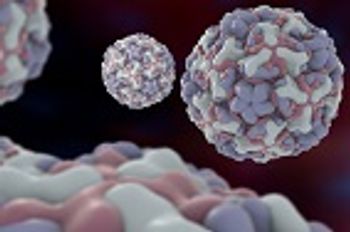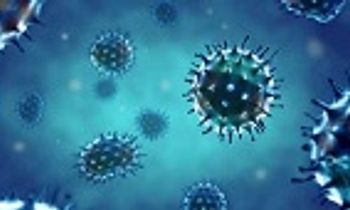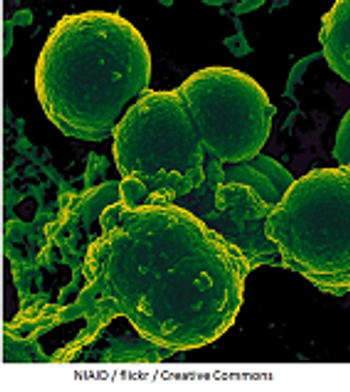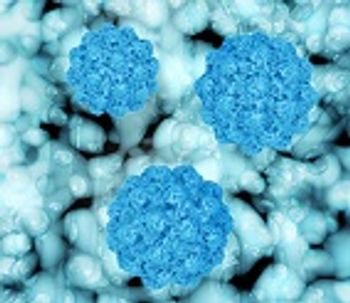
Can a vaccine be developed for human rhinovirus in its many forms? A new study suggests that it is possible.

Can a vaccine be developed for human rhinovirus in its many forms? A new study suggests that it is possible.

At this year’s annual National Foundation for Infectious Diseases news conference on influenza and pneumococcal disease, the message was clear as health experts issued a resounding call for all Americans 6 months of age and older to get their flu shot.

As individual nations attempt to make meaningful progress on stemming antibiotic use, a troubling new study shows that hospitals in the United States have continued to dispense antibiotics at a steady rate in recent years.

State health departments in Minnesota and Washington are on the alert after recent outbreaks of Legionnaire’s disease.

A recent report from the Centers for Disease Control and Prevention (CDC) shows influenza viruses currently in circulation in the United States are the same as anticipated by vaccine makers, hopefully signaling effectiveness ahead for 2016-2017 Northern Hemisphere influenza vaccines.

When researchers recently discovered a strain of Escherichia coli resistant to the final resort antibiotics colistin and carbapenem in the United States, it marked an increasing pattern of pan–drug-resistant bacteria appearing worldwide. A new report from France, though, may indicate that identifying and isolating these deadly superbug strains may help us control their spread.

On September 21, 2016, delegates at the 71st meeting of the United Nations (UN) General Assembly gathered to discuss the shared danger of antimicrobial resistance, signaling the global scale of this urgent public health crisis while pledging to collectively tackle the problem of superbugs.

The World Health Organization credits contraception with preventing pregnancy-related health risks in women, reducing adolescent pregnancies, and lowering infant mortality rates. What researchers are now discovering is that hormonal contraceptives containing progesterone may also protect women against influenza infections and repair lung damage caused by inflammation.

Health officials around the world agree that our one of the best steps to reducing the problem of antimicrobial resistance is scaling back on unnecessary overprescribing of these medications. As doctors in many countries work to implement these efforts, a new report out of the United Kingdom shows some progress in the fight against drug-resistant “superbugs,” along with plenty of work to still be done.

As so-called “superbug” bacteria continue to develop new ways of resisting antibiotics, scientists are on the search for new and alternative treatments. Promising news from a recent study is now showing that we may be able to battle the most virulent strains of the Clostridium difficile bacteria with a class of drugs already on the market.

The number of illnesses, hospitalizations, and deaths caused by Salmonella have been steadily rising each year, and now findings from new report on nontyphoidal Salmonella enterica show that some 20% of blood isolates of the bacteria have antibiotic resistance.

As health experts around the world take on the problem of antimicrobial resistance and overuse of antibiotics in humans as a prime cause, world leaders are reminding us of another contributor to this global health issue: our farming system.

A team of scientists from Rutgers University and Columbia University recently discovered a new strain of Escherichia coli (E. coli) believed to be the first in the United States with resistance to two kinds of antibiotics considered to be last resort weapons to prevent dangerous infections.

We hear a lot about influenza types A and B every year when flu season approaches, and occasionally about the less severe type C. Now researchers have identified a newly recognized form of the virus—influenza D.

When the colistin-resistant gene, mcr-1, was first found in China in 2015, health officials around the world knew that the gene would inevitably appear in their countries. It has since been detected in other parts of Asia, Europe, and North America, including Canada, which just released a 2016 report from their Canadian Antimicrobial Resistance Surveillance System.

To find the next great innovation to fight the spread of drug-resistant bacteria, the National Institutes of Health has announced the launch of a new federal prize competition dubbed the Antimicrobial Resistance Diagnostic Challenge.

With schools and colleges back in session, so too are contagious illnesses such as hand, foot, and mouth disease, which has recently broken out in two New Jersey high schools and a Florida university.

The CDC recently announced that their investigators have identified a strain of Escherichia coli with the colistin-resistance gene mcr-1 in a Connecticut child, in what is now the fourth patient in the United States to test positive for an isolate with mcr-1.

Nearly 900,000 people in the United States get pneumococcal pneumonia each year, resulting in about 400,000 hospitalizations annually.

Nearly a decade ago, 130 Veterans Health Administration facilities around the country introduced their methicillin-resistant Staphylococcus aureus (MRSA) Preventive Initiative to reduce transmission of the “superbug” in their hospitals and health centers.

In a new ruling, the US Food and Drug Administration (FDA) has declared that companies selling over-the-counter antiseptic washes will no longer be allowed to market their products as such due to doubts over these products’ safety and effectiveness.

A wild mallard duck found near a state wildlife refuge in Fairbanks, Alaska has tested positive for the H5N2 form of avian influenza.

A group of German researchers recently published an investigative study on the source of drug-resistant pathogens in hospitals and treatment centers.

Researchers from Stanford University have developed a new quick and easy test for tuberculosis (TB) which may help doctors in developing nations.

The US Food and Drug Administration (FDA) has approved the new influenza vaccines AFLURIA and AFLURIA QUADRIVALENT from Seqirus.

Researchers still know very little about just how norovirus works, but a new study has shed light on how norovirus gets into cells and causes disease.

A new study shows that detecting and isolating Clostridium difficile carriers when they are admitted to hospitals can significantly reduce the incidence of new infections from the pathogen.

In the battle against drug-resistant pathogens, genetic research holds promising answers to our toughest threats. A new study shows that the best tool for treating Clostridium difficile infections could be within the genome of the bacteria itself.

New research from the Imperial College of London now offers a promising novel approach in the fight against methicillin-resistant Staphylococcus aureus (MRSA), and their findings are decidedly salty.

As the rise of antibiotic-resistant bacteria leads to higher rates of life-threatening infections from pathogens such Clostridium difficile and methicillin-resistant Staphylococcus aureus (MRSA), researchers are increasingly looking to probiotic treatment as an important part of fighting infections.